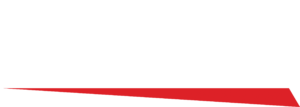Enabling diversity through flexible work
Martin Sinclair Sep 25

Construction sets ambitious goals
In May 2023, the Australian Constructors Association (ACA) pledged to transform the culture of the industry from the bottom up to address current workforce shortages and position the industry for the future. That included setting ambitious goals for gender equality and flexibility.
At the time, ACA CEO Jon Davies said the pledge aimed to address two significant industry issues known to impact workplace culture: gender equality and workplace flexibility.
“As the most male dominated industry in Australia and with the widest pay gap of any, this is an ambitious target that will promote gender equality and greater diversity and inclusion,” said Davies.
“To further raise the bar industry-wide, the second target area is workplace flexibility. ACA members will mandate flexible work plans for employees on every project, both office and site roles, in a move to address the long hours, high stress and poor work-life balance that characterises the industry.”
The ACA are the latest in a number of big, traditionally male-dominated industry sectors who are rethinking their approach to inclusion, diversity and more flexible workplaces.
Big miners make bold moves
Back in 2016, one of the world’s biggest miners, BHP, outlined a bold aspirational goal to achieve gender balance by 2025. At the time, then CEO Andrew Mackenzie said they knew the benefits would far outweigh any difficulties encountered.
“This was something we had to do for the good of the business, our people and the communities in which we operate,” said Mackenzie in 2019.
Many, from inside and outside the organisation questioned whether they could achieve it, but as a company, they chose to ignore the negative commentary and back their capability to make the changes necessary to reach their aspirations.
The progress BHP has made to date has largely been achieved by focusing on the basics: removing bias from their hiring and recruitment practices, embedding flexible work, making respect a non-negotiable behaviour at work, and implementing an annual gender pay review.
And it’s been backed up by data showing their most inclusive and diverse teams are outperforming other teams in terms of safety, culture and productivity. People in diverse teams are also more likely to speak up, share ideas, work together to solve problems and make better decisions.
Fortescue tells a similar story. In 2021, they endorsed a family diversity plan which embodied their commitment to a workforce that reflected their communities. As former CEO Elizabeth Gaines told a conference in 2022: “We know that diversity delivers the best results. It’s not just the right thing to do, it’s the smart thing to do. And as companies, we all have a responsibility to ensure as many women as possible have the opportunity to participate in, and make a strong contribution, to the resources sector.”
Challenge pre-conceptions
When some of Hire’s biggest customers are publicly taking a stance on issues that impact society and our local communities, it makes sense to take notice. In December 2022, the Workplace
Gender Equality Agency (WGEA) released their scorecard on the state of gender equity in Australia. Their report found that every single industry in Australia has a gender pay gap that favours men, the gender pay gap is 22.8% and men are twice as likely as women to be in the top earning bracket. The good news is that the gender pay gap in ‘Rental, Hiring and Real Estate
Services’ had the largest single drop of any industry sector in WGEA’s data, with a decline of 5.1 percentage points. But while that’s a great result, the gender pay gap for our sector still sits
around 26 per cent. While you may already be consciously shifting cultural and behavioural mindsets within your own teams, are other pre-conceived ideas holding back your Hire
business, especially in terms of safety, productivity, culture and wellbeing, and impacting your ability to hire — and retain — great new talent? Diana Hodgson is the Founder and Director of HR Strategic Partners, a practice specialising in leadership and culture. She says that while change is clearly happening, there are always opportunities to better realise the value of a diverse, inclusive and flexible workplace.
“Flexibility is a key enabler for diversity. My advice to leaders in the Hire industry is take the time to listen to your people about what flexibility would be meaningful to them.
They know your business; they know what you need but how well do you know what they need?” Diana says many businesses mistakenly equate flexible work with working from
home, particularly in the post-pandemic world. However, while working from home arrangements will suit many employees and businesses, it’s not the only aspect of flexibility that should be considered. Hours of work is another, including part-time options or staggered shifts or rosters across the workday. “The nature of the Hire industry means you often need people onsite
to engage with customers, service equipment or deliver/pick-up machinery,” she says. “So keep an open mind around what flexibility looks like and how you can make it work for your
business and your people.” With everyone at a different stage in their life journey — from parental leave and caring for kids or ageing parents, to employees transitioning to retirement,
looking to take up some part time study or simply needing a mental health day — there will always be elements that need to be juggled and balanced. “That means employers and workers
need to shift their mindsets from an obligation to work in a traditional way to striking a balance that suits the business, customers and employees,” says Diana. “When more people see others more confidently and effectively working flexibly, I have no doubt we’ll find a great evolution in workplaces where flexibility becomes the productive norm
across the board.” Flexible workplaces are an enticing drawcard for people looking to build a career in Hire, especially women, but it’s only one part of the journey towards
more inclusive and diverse workplaces. Considering we’re in the midst of a skills shortage and in some cases, competing with tier one customers for the best talent, maybe now’s the time to
focus on inclusion, diversity and flexible work and then reap the rewards.
For more inspiration or information, download a copy of the HR Strategic Partners White Paper: ‘How to make flexible work work’.
White Paper | HR Strategic Partners










